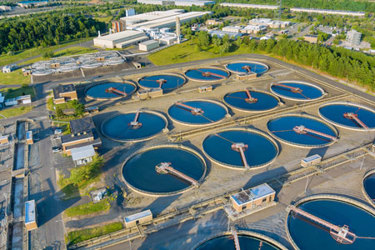Optimizing Header Pressure For Energy Savings And Robust Control

In a biological nutrient removal (BNR) operation, properly managing pressure in the air header system is one of the most important factors in achieving accurate dissolved oxygen (DO) control in an energy-efficient manner. For years, wastewater treatment plants (WWTPs) have used pressure-based control strategies. Pressure is a direct and easily measurable parameter that allows operators to assess the status of the aeration system to make real-time adjustments, and for many years provided the only cost-effective means of doing so.
However, now that high-quality thermal mass flow meters can be obtained for a reasonable cost, many facilities are discovering flow-based blower and valve control strategies are better suited to their needs. Flow-based strategies provide excellent DO control while simultaneously optimizing header pressure through a technique referred to as most-open valve control. In this article, a method for implementing most-open valve control will be explored, and arguments will be presented regarding why a flow-based control method will result in the best outcomes when controlling aeration in WWTPs.
Get unlimited access to:
Enter your credentials below to log in. Not yet a member of Water Online? Subscribe today.
